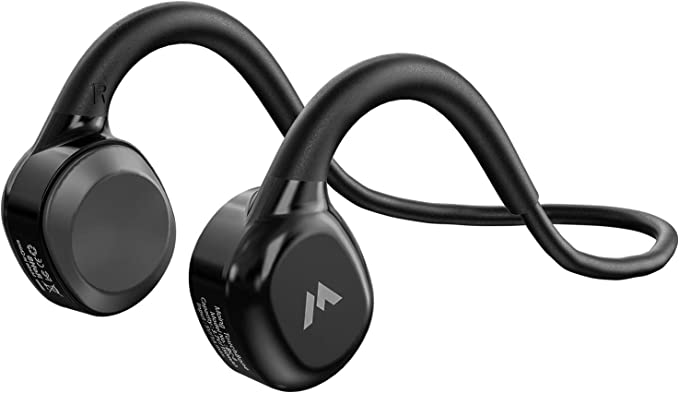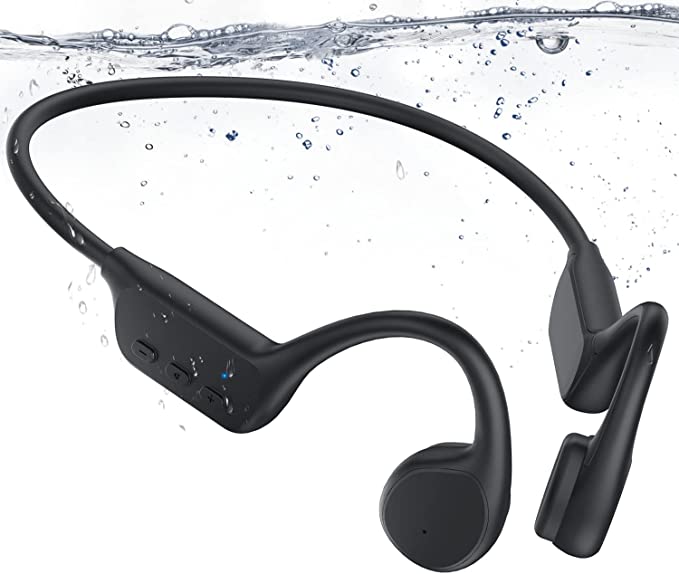The Unseen Dance: Deconstructing Hybrid Stabilization and AI Tracking in Modern Camera Drones
Update on Oct. 19, 2025, 1:02 p.m.
The footage is deceptively simple: a mountain biker carves down a winding trail, the camera tracking their every move from a stable, floating perspective. It looks effortless, almost serene. Yet, beneath this veneer of simplicity lies a maelstrom of controlled violence—a high-speed, real-time ballet of mechanics, electronics, and algorithms working in concert to defy the laws of physics. This is not merely about a good camera; it’s about a sophisticated robotic system’s triumph over an inherently chaotic environment. This article deconstructs the core engineering principles that make such a shot possible, using a compact device like the HOVERAir X1 PRO as our technical case study.

The Mechanical Foundation: The Gimbal and Control Theory
Any object in flight is subject to motion along three axes: Pitch (tilting forward/backward), Roll (tilting side-to-side), and Yaw (rotating left/right). The first line of defense against the large, sweeping motions induced by wind and forward momentum is the mechanical gimbal. At its heart, a gimbal is a pivoted support that allows the rotation of an object about a single axis. In our case, a two-axis gimbal isolates the camera from the drone’s pitch and roll movements.
But how does it know how much to counteract? The answer lies in a cornerstone of control engineering: the PID (Proportional-Integral-Derivative) controller. An Inertial Measurement Unit (IMU) on the camera mount constantly reports its orientation. The PID algorithm reads the error between the current orientation and the desired, perfectly level orientation. * The Proportional term applies a corrective force proportional to the current error (a large tilt gets a strong push back). * The Integral term looks at the accumulated error over time, correcting for steady-state errors or drift. * The Derivative term looks at the rate of change of the error, preemptively damping oscillations to avoid overshooting the target.
It is a continuous, high-frequency feedback loop: measure error, calculate correction, apply force via brushless motors, repeat. This is the gimbal’s brutish, powerful muscle, doing the heavy lifting of stabilization.
An Engineering Reality check is crucial here. While a three-axis gimbal offers superior mechanical stabilization by also controlling yaw, the designers of a compact drone like the X1 PRO make a deliberate trade-off. By handling the two most significant axes of motion (pitch and roll) mechanically, they can solve the yaw and other high-frequency jitters in the digital domain. This saves critical weight, space, and power, which are paramount in a portable, palm-launched device.
The Digital Reflex: Electronic Image Stabilization (EIS)
While the gimbal tames the large waves of motion, it cannot eliminate the high-frequency vibrations দ্বিতীয় from the motors or air turbulence. This is where Electronic Image Stabilization (EIS) takes over, acting as the system’s lightning-fast nervous reflex.
EIS does not physically move the camera. Instead, it leverages the fact that a 4K sensor (3840x2160 pixels) has a higher resolution than the final 1080p or even 4K output might require, creating a buffer of pixels around the recorded frame. The process is computationally intensive:
1. Motion Sensing: Data from the drone’s gyroscope and IMU provides a high-speed reading of the drone’s unwanted jitters.
2. Image Registration: Simultaneously, a computer vision algorithm analyzes consecutive frames of the video feed. It identifies hundreds of unique feature points in one frame and finds their corresponding locations in the next. The collective movement of these points creates a precise motion vector, describing exactly how the frame has shifted.
3. Correction: The system then shifts the digital recording window in the opposite direction of the detected motion, effectively canceling it out. If the drone jitters up and to the left, the digital crop moves down and to the right within the sensor’s total area.
A specialized application of this is Horizon Leveling, which uses the gyroscope’s gravity vector to ensure that no matter how the drone banks into a turn, the horizon in the final footage remains steadfastly level. This combination of mechanical and electronic systems forms a hybrid stabilization powerhouse, where each component handles the task it is best suited for.
The Brain: Autonomous Tracking and Sensor Fusion
A stable image is useless without intelligent framing. The ability of the drone to autonomously follow a subject is arguably its most complex task, relying on a fusion of data from multiple sensors.
The primary tracking method is computer vision. Modern tracking algorithms, often based on deep learning architectures like Siamese networks, are trained to identify an object (e.g., a person) and create a unique digital signature for it. In subsequent frames, the algorithm scans the image to find that signature, predicting the subject’s trajectory and velocity to keep it centered in the frame. To perform this analysis 30 to 60 times per second, the drone requires a powerful System-on-a-Chip (SoC) with dedicated AI acceleration hardware, capable of several Trillion Operations Per Second (TOPS).
Simultaneously, the drone must know its own position and movement in 3D space. This is achieved through Visual-Inertial Odometry (VIO). VIO is a brilliant sensor fusion technique that combines two imperfect data sources: * Visual Odometry (from the camera): By tracking the movement of static features on the ground, the drone can estimate its motion. This is accurate over the long term but can be slow and susceptible to errors in environments with poor lighting or few visual features (like a blank wall or open water). * Inertial Odometry (from the IMU): Accelerometers and gyroscopes provide incredibly fast, high-frequency data about motion changes. However, tiny measurement errors accumulate over time, causing the position estimate to “drift” significantly.
By feeding both of these messy data streams into an algorithm like a Kalman filter, the system can produce a single, unified state estimation that is far more accurate and robust than either input alone. The filter uses the IMU data to predict the drone’s new position and the camera data to correct that prediction, constantly refining its understanding of where it is and how it’s moving.
Achieving Robustness: The Multi-Modal Approach
The greatest challenge for a purely vision-based system is failure. If the subject is briefly hidden behind a tree (occlusion), or if the lighting conditions change dramatically, the visual lock can be lost. This is where the most advanced systems employ a multi-modal approach.
The HOVERAir X1 PRO’s Cycling Combo, for instance, includes a Beacon. This small device, carried by the user, transmits a radio frequency (RF) signal. The drone’s HoverLink system can now use this signal as a completely independent source of location data. The master algorithm fuses three data streams: the computer vision’s estimate of where the subject is, the VIO’s estimate of where the drone is, and the Beacon’s signal indicating the subject’s relative direction. If the visual tracker temporarily fails, the system can still rely on the Beacon’s signal to continue following, reacquiring a visual lock as soon as the subject is visible again. This is the essence of robust robotics: never rely on a single sensor.

Conclusion: A System of Systems
The seemingly magical ability of a modern camera drone to fly itself and capture perfect footage is not the result of a single breakthrough technology. It is the product of a carefully orchestrated interplay between disparate engineering disciplines. It is a system of systems: a mechanical gimbal governed by control theory, a digital stabilizer powered by computer vision, and an autonomous brain guided by the fusion of multiple, imperfect sensors. Each component compensates for the weaknesses of the others, creating a whole that is far greater, and far more intelligent, than the sum of its parts.























